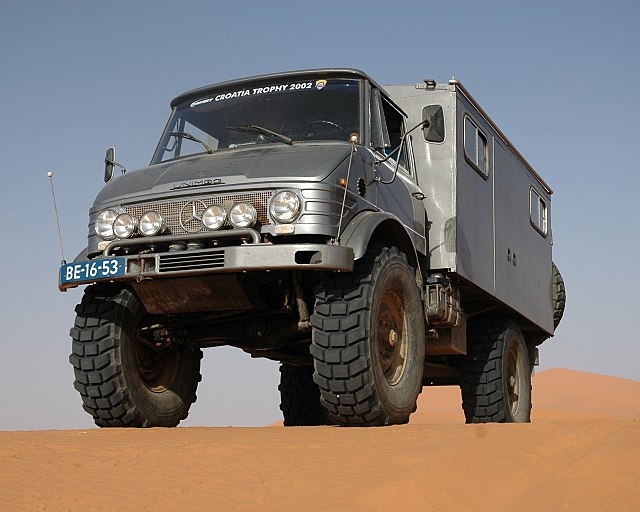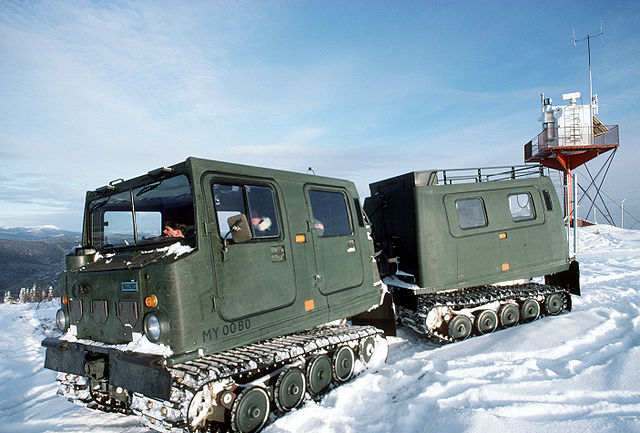A portal axle is an off-road vehicle suspension and drive technology where the axle tube or the half-shaft is offset from – usually above – the center of the wheel hub and where driving power is transferred to each wheel via a simple gearbox, built onto each hub. It gives two advantages: ground clearance is increased, particularly beneath the low-slung differential housing of the main axles — and secondly, any hub reduction gearing allows the axle half shafts to drive the same power but at reduced torque. This reduces load on the axle crown wheel and differential.
Pinzgauer portal axle
Simple portal gearbox from a WW2 Volkswagen Type 82 Kübelwagen
1930 Farmall tractor with rear portal axle
1961 Porsche F 108 tractor with rear portal axle
An off-road vehicle (ORV), sometimes referred to as an off-highway vehicle (OHV), overland vehicle, or adventure vehicle, is considered to be any type of vehicle that is capable of driving off paved or gravel surfaces, such as trails and forest roads that have rough and low traction surfaces.
Mercedes-Benz Unimog in the Dunes of Erg Chebbi in Morocco. The vehicle's portal gear axles provide high ground clearance.
Nicholas II's Packard Twin-6 with Kégresse track, 1917
Swedish Hägglunds Bv206 with wide rubber tracks
Russian GAZ-34039 [ru]








![Russian GAZ-34039 [ru]](https://upload.wikimedia.org/wikipedia/commons/thumb/d/dc/%D0%93%D0%A2-%D0%A1%D0%9C_at_Vankorskoe_oilfield.jpg/640px-%D0%93%D0%A2-%D0%A1%D0%9C_at_Vankorskoe_oilfield.jpg)